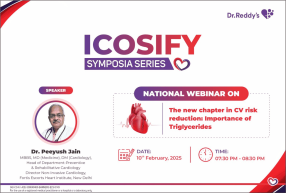Inspiratory Muscle Training Improves Cough Strength in Frail Older Adults
Inspiratory Muscle Training Improves Cough Strength in Frail Older Adults
A recent randomized controlled trial has shown that inspiratory muscle training (IMT) significantly enhances cough strength in older adults with frailty, suggesting its potential as a targeted intervention for this vulnerable population.
The study involved 60 frail older adults, with 52 completing the trial. Participants were randomly assigned to either an IMT group, which performed inspiratory muscle exercises alongside general exercise training, or a control group that engaged in general exercise training alone.
IMT participants used a threshold device set at 30% of their maximum inspiratory pressure, performing 30 breaths twice daily over eight weeks.
The primary outcome, cough peak flow (CPF), demonstrated notable improvement in the IMT group, with an average increase of 28.7 ± 44.4 L/min compared to a decrease of -7.4 ± 26.6 L/min in the control group. The mean difference between groups was 36.3 L/min (95% CI: 16.7–55.9), with a large effect size of 0.99.
These findings indicate that IMT is a practical and effective approach to strengthening respiratory muscles, leading to improved cough function in frail older adults. Enhanced cough strength can play a critical role in reducing the risk of complications such as aspiration and respiratory infections, offering a valuable addition to care strategies for this demographic.
Inspiratory Muscle Training Improves Cough Strength in Frail Older Adults
Inspiratory Muscle Training Improves Cough Strength in Frail Older Adults
A recent randomized controlled trial has shown that inspiratory muscle training (IMT) significantly enhances cough strength in older adults with frailty, suggesting its potential as a targeted intervention for this vulnerable population.
The study involved 60 frail older adults, with 52 completing the trial. Participants were randomly assigned to either an IMT group, which performed inspiratory muscle exercises alongside general exercise training, or a control group that engaged in general exercise training alone.
IMT participants used a threshold device set at 30% of their maximum inspiratory pressure, performing 30 breaths twice daily over eight weeks.
The primary outcome, cough peak flow (CPF), demonstrated notable improvement in the IMT group, with an average increase of 28.7 ± 44.4 L/min compared to a decrease of -7.4 ± 26.6 L/min in the control group. The mean difference between groups was 36.3 L/min (95% CI: 16.7–55.9), with a large effect size of 0.99.
These findings indicate that IMT is a practical and effective approach to strengthening respiratory muscles, leading to improved cough function in frail older adults. Enhanced cough strength can play a critical role in reducing the risk of complications such as aspiration and respiratory infections, offering a valuable addition to care strategies for this demographic.







 Nephrology
Nephrology 














































